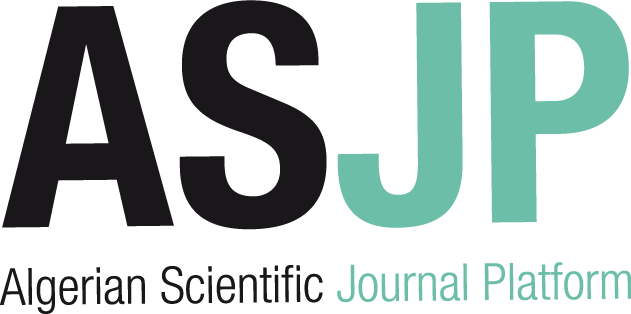| Titre : |
Computer simulation in materials science : nano / meso / macroscopic space & time scales |
| Type de document : |
texte imprimé |
| Auteurs : |
Helmut O Kirchner, Auteur ; Ladislas P. Kubin, Auteur |
| Editeur : |
Dordrecht : D. Reidel publishing campany |
| Année de publication : |
1996 |
| Importance : |
x-603 p. |
| Présentation : |
ill. |
| Format : |
30 cm. |
| ISBN/ISSN/EAN : |
978-0-7923-3902-1 |
| Note générale : |
Contributuons du NATO Advanced Study Institute on Computer Simulation in Materials Science organisé à l'Ile d'Oléron, France, du 6 au 16 juin 1995 Bibliogr. Index |
| Langues : |
Français (fre) |
| Mots-clés : |
Computer simulation -- Congresses
Science des matériaux -- Simulation par ordinateur
Ingénierie -- Simulation par ordinateu |
| Index. décimale : |
620.1 Essais des matériaux. Défauts des matériaux. Protection des matériaux |
| Résumé : |
This volume collects the contributions to the NATO Advanced Study Institute (ASI); "Computer Simulation in Materials Science -NanolMesolMacroscopic Space and Time Scales", held on lIe d'OIeron (France) June 6-16, 1995.1his event was intended to present the state of the art in simulation techniques in Materials Science. For decades to come the limits of computing power will not allow for atomistic simulations of macroscopic specimens. Simulations can only be performed on various scales (nano, meso, micro, macro) with the constitutive input provided by simulations (or data) on the next smaller scale. The resulting hierarchy has been the main topic of many of lectures and seminars. Necessarily, special emphasis was placed on mesoscopic simulations bridging the gaps between nano (atomic) and micro space and time scales. During the ASI, lecturers and participants did not only consider fundamental problems, but also applications. Papers on the evolution of morphological patterns in phase transformations and plastic deformation, irradiation effects, mass transport and mechanical properties of materials in general, highlighted what has already been achieved. It was concluded that computer simulations must be based on realistic and efficient models, the fundamental equations controlling the dynamical evolution of microstructures, stochastic field kinetic models being a case in point. |
| Note de contenu : |
Au sommaire:
1.Space and time scales
2.Simulation techniques at different scales
3.Modelling and applications atomic scale
4.Modelling and applications mesoscopic scale
|
Computer simulation in materials science : nano / meso / macroscopic space & time scales [texte imprimé] / Helmut O Kirchner, Auteur ; Ladislas P. Kubin, Auteur . - Dordrecht : D. Reidel publishing campany, 1996 . - x-603 p. : ill. ; 30 cm. ISBN : 978-0-7923-3902-1 Contributuons du NATO Advanced Study Institute on Computer Simulation in Materials Science organisé à l'Ile d'Oléron, France, du 6 au 16 juin 1995 Bibliogr. Index Langues : Français ( fre)
| Mots-clés : |
Computer simulation -- Congresses
Science des matériaux -- Simulation par ordinateur
Ingénierie -- Simulation par ordinateu |
| Index. décimale : |
620.1 Essais des matériaux. Défauts des matériaux. Protection des matériaux |
| Résumé : |
This volume collects the contributions to the NATO Advanced Study Institute (ASI); "Computer Simulation in Materials Science -NanolMesolMacroscopic Space and Time Scales", held on lIe d'OIeron (France) June 6-16, 1995.1his event was intended to present the state of the art in simulation techniques in Materials Science. For decades to come the limits of computing power will not allow for atomistic simulations of macroscopic specimens. Simulations can only be performed on various scales (nano, meso, micro, macro) with the constitutive input provided by simulations (or data) on the next smaller scale. The resulting hierarchy has been the main topic of many of lectures and seminars. Necessarily, special emphasis was placed on mesoscopic simulations bridging the gaps between nano (atomic) and micro space and time scales. During the ASI, lecturers and participants did not only consider fundamental problems, but also applications. Papers on the evolution of morphological patterns in phase transformations and plastic deformation, irradiation effects, mass transport and mechanical properties of materials in general, highlighted what has already been achieved. It was concluded that computer simulations must be based on realistic and efficient models, the fundamental equations controlling the dynamical evolution of microstructures, stochastic field kinetic models being a case in point. |
| Note de contenu : |
Au sommaire:
1.Space and time scales
2.Simulation techniques at different scales
3.Modelling and applications atomic scale
4.Modelling and applications mesoscopic scale
|
|  |


 Ajouter le résultat dans votre panier Faire une suggestion Affiner la recherche
Ajouter le résultat dans votre panier Faire une suggestion Affiner la recherche










